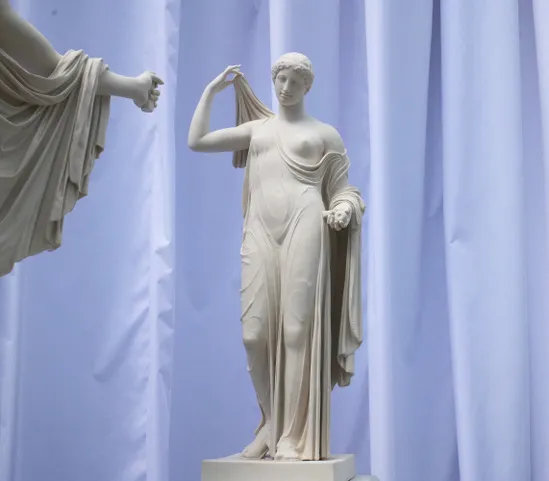Aphrodite, Known as the Venus Genetrix Type

A woman steps forward, emerging from her bath. The fine fabric of her garment clings delicately to the contours of a powerful body, revealing part of her chest and the curve of her shoulder. In a graceful, fluid gesture, she adjusts her drapery, tilts her head slightly, and offers us an apple.
This seemingly ordinary fruit identifies her as the fairest of the goddesses—and will soon spark the legendary conflict between Trojans and Greeks. But that, as told by Homer in The Iliad, is another story…
This iconic image of the goddess of love and beauty was well known in the ancient world. The sculpture is thought to be a Roman work inspired by a lost Greek bronze by the sculptor Callimachus. In it, the Roman Venus adopts the features of the Greek Aphrodite.
Around 46 BCE, a replica of the statue was placed in the Temple of Venus Genetrix, in the new forum built by Julius Caesar in Rome—a powerful political gesture. The title Genetrix, meaning “mother” in Latin, refers to the goddess as a founder, establishing her as Caesar’s divine ancestor and reinforcing his claim to authority.